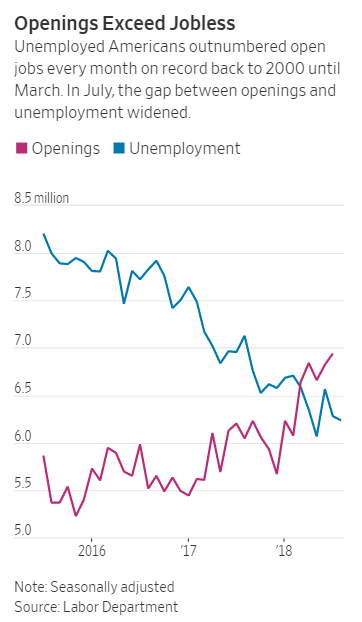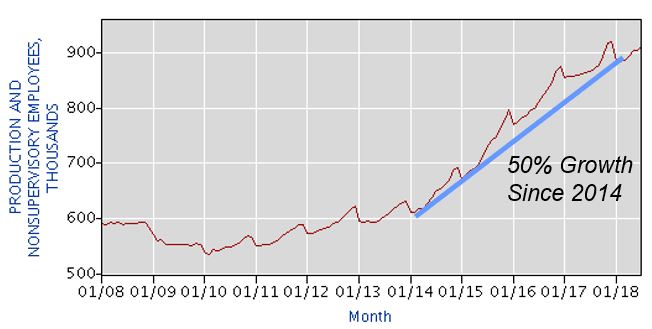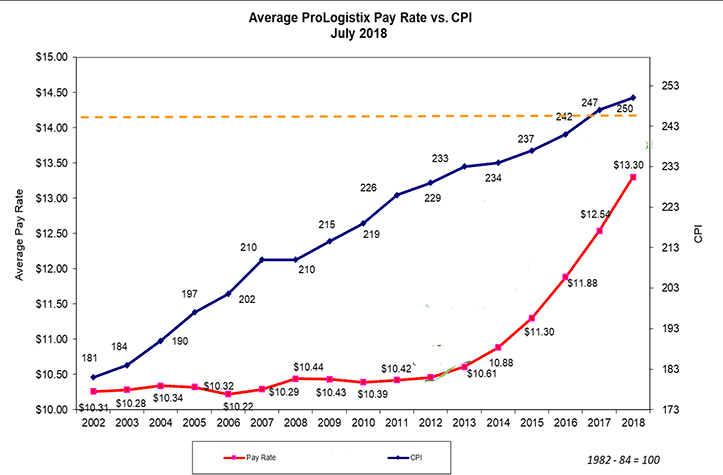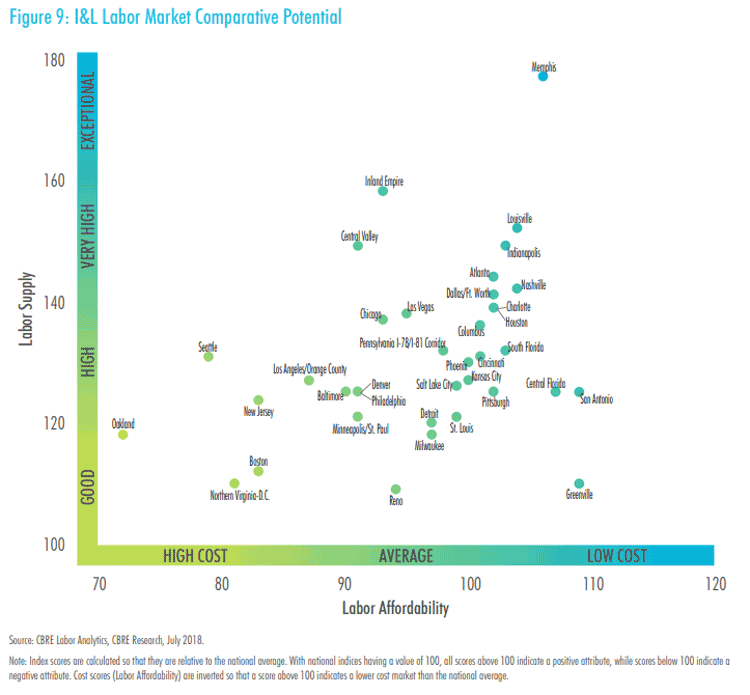We all know about the significant truck driver shortage. Are we close to that scenario for distribution centers as well?
Gilmore Says.... |
 |
| The bottom line is that if you are hiring in the $12-14.00 per hour wage range, in this environment, if you can find anyone at all, you are getting fair at best or even pool quality candidates. |
 |
What do you say? |
|
| Click here to send us your comments |
| |
|
|
|
In September, I moderated an excellent panel discussion on DC labor issues at the Fuel user conference of supply chain consulting firm enVista, as recounted in my trip report on the overall event.
I kicked off the discussion with a set of slides that I think nicely illustrated what the landscape is right now, and I am going to largely use those slides to drive my discussion here.
First, I will note the labor shortage is also acute in manufacturing, with many companies desperate for shop floor employees.
And that is in large measure because of the historically strong jobs environment. As evidence of that, the Bureau of Labor Statistics reports that since March there has been a rarely seen labor market "inversion" of sorts in which, as seen in the graphic below. It shows there are more US job openings now then there are unemployed workers, a historical anomaly.
And in fact the gap is getting larger in recent months, as you can see. The bottom line is that it is hard for every sector to attract workers, made worse in distribution because of the tremendous growth in DC jobs.

As can be seen below, DC jobs in the US have soared 50% since early 2014, to some 900,000, up from 600,000 in four years.
Growth in US Distribution Center Jobs

And it doesn't let up. Amazon is hiring some 50,000 holiday fulfillment center workers here in 2018, 3000+ in just the Dallas area alone, sucking up the labor pool, especially with the new $15.00 minimum wage recently announced by Amazon.
That demand for workers has finally started to have an impact on wages – frankly belatedly. As can be seen in another chart, DC wages stagnant from 2002 through 2013, before starting a rather steep jump. Meanwhile, the cost of living kept moving upwards, leaving DC workers behind. The flat wages from 2002-2013 wwere really something of an aberration, and no one should be surprised by the recent sharp jump, which will only be exacerbated by the Amazon wage hike.

The bottom line is that if you are hiring in the $12-14.00 per hour wage range, in this environment, if you can find anyone at all you are getting fair at best or even poor quality candidates.
I will note here that at the enVista conference, panelist Tim Short of grocery chain Wegmans noted that it takes his company 30-40 recruits to wind up with one hired. It wasn't said, but I assume drug testing issues are a big factor in that ratio – but that is also surely reflective of the quality of the candidates.
But obviously, the dynamics vary – dramatically – by market. The graphic below from real estate firm CBRE charts major US metro areas along two dimensions: warehouse labor supply and warehouse labor costs:

It's a little hard to see, but very well-positioned markets include Louisville, Indianapolis, Atlanta, Nashville, and especially - standing far from the pack - Memphis. Worth noting for your new DC decision.
So until the recession finally comes, with the continued growth of ecommerce (14-16% year over year each quarter still) the demand for DC workers should continue to expand, perhaps causing a true crisis in the supply of labor.
The wild card: automation of course. While the trucking industry looks to autonomous trucks to solve its driver labor crisis, that technology is surely years away from any meaningful adoption.
But highly automated DCs are here right now. Walmart just this week announced plans for its first highly automated grocery DC, scheduled to open in California in 2020, which it says will deliver 40% more throughput than its traditional DC designs. Not specified, but I am sure it will require a lot fewer workers per case out the door.
Interestingly, Walmart is also touting the fact that the automated DC – which will brings goods to pickers – will make the job for DC workers better. It even says it will generate a number of higher level STEM type jobs to keep all that automation running.
But you obviously have to have tremendous scale to afford that kind of automation. For the rest of us, expect wages to continue to head higher, labor availability to become a key driver of location decisions, and still lots of mediocre candidates unless you send wages north of Amazon's $15.00.
Any reaction to Gilmore's summary of the DC labor market? What are you seeing? Let us know your thoughts at the Feedback section below.
Your Comments/Feedback
|